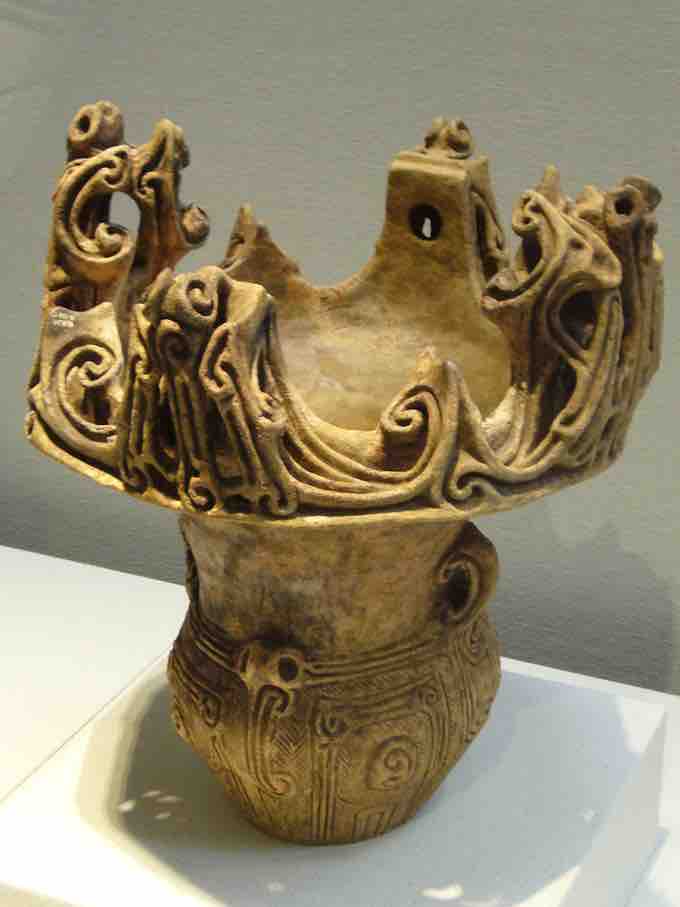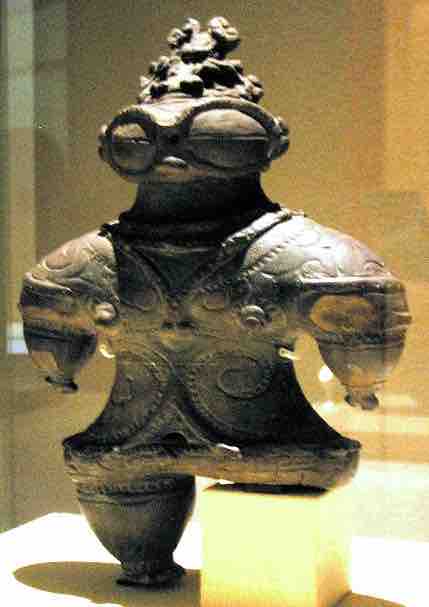Overview: Prehistoric Japan
Prehistoric art of Japan begins with the Jōmon period (c. 10,000 BCE - 350 BCE). The Jōmon people are generally said to have been the first settlers of Japan. Nomadic hunter-gatherers who later practiced organized farming and built cities, the Jōmon people are named for the "cord-markings"—impressions made by pressing rope into the clay before it was heated to approximately 600-900 degrees Celsius—that were found as decorations on pottery of this time. The term Jōmon was first applied to the pottery and the culture by American Edward Sylvester Morse. Jōmon pottery is said by many scholars to be the oldest yet discovered in the world.
Jōmon People and Their Art
The Jōmon communities consisted of hundreds or even thousands of people, who dwelt in simple houses of wood and thatch set into shallow earthen pits to provide warmth from the soil. They crafted lavishly decorated pottery storage vessels, clay figurines called dogū, and crystal jewels.
Pottery Vessels
The oldest examples of Jōmon pottery have flat bottoms, though pointed bottoms (meant to be held in small pits in the earth) became common later. In the Middle Jōmon period (3000-2000 BCE), simple decorations on the pottery (created with cord or through scratching) gave way to highly elaborate designs. So-called flame vessels, along with the closely related crown-formed vessels, are among the most distinctive forms from this period.

Crown-formed vessel from middle Jōmon period (3000-2000 BCE)
"Crown-formed vessel," a variation on the flame vessel style for which Jōmon art is famous.
Dogū
Representative forms such as clay figurines of people and animals also appeared around this time. These figurines, called dogū, are often described as "goggle-eyed" and feature elaborate geometrical designs and short, stubby limbs. They are generally believed to have borne a religious or ritual significance.

A Final Jōmon statuette (1000-400 BCE)
An example of Jōmon dogū